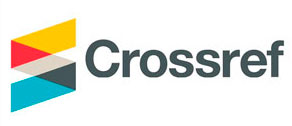Metode Depresiasi Aktiva Tetap Berwujud Dan Dampaknya Pada Laporan Laba Rugi (Studi Kasus pada PT Intiroda Makmur di Tangerang)
Abstract
This study aims to determine the depreciation method used, to determine whether the company has calculated its depreciation of fixed assets in accordance with accounting standards so as to produce a reasonable depreciation costs, to determine whether the imposition of the method of depreciation of fixed assets in accordance with accounting standards , presented the income statement would be more realistic.
Research methodology is based on analysis of research on the calculation of depreciation of fixed assets of the company, there is a difference or a difference in the cost of depreciation of fixed assets is presented in the company's income statement thereby affecting the profits to be recognized perusahaan.berdasarkan discussion and analysis has been done by the author, author tries to give some suggestions that in determining the method of depreciation of fixed assets, the company should not only refer to a single method that is only the straight-line method, companies should also consider the characteristics of the fixed assets are depreciated and the depreciation method of determining the general rules set out in the statement of financial accounting standards.
Keywords
Full Text:
PDFReferences
Baridwan, Zaki, Intermediate Accounting,. Edisi Kedelapan, Penerbit : Bpfe, Yogyakarta, 2004.
Harahap, Sofyan, Safri, Teori Akuntansi, Edisi Revisi, Penerbit : PT Raya Grafindo Persada, Jakarta, 2007.
Ikatan Akuntansi Indonesia, Pernyataan Standar Akuntansi Keuangan, Penerbit : Salemba Empat, Jakarta, 2004.
Ikatan Akuntansi Indonesia, Pernyataan Standar Akuntansi Keuangan, Penerbit : Salemba Empat, Jakarta, 2007.
Kieso, Donal E Dan Waygandi, Jerry J, Intermediate Accounting, Edisi Kesepuluh, Penerbit : Binarupa, Jakarta, 2002.
Munawir, Analisis Laporan Keuangan, Penerbit : Liberty, Yogyakarta, 2004.
DOI: http://dx.doi.org/10.36448/jak.v2i1.21











